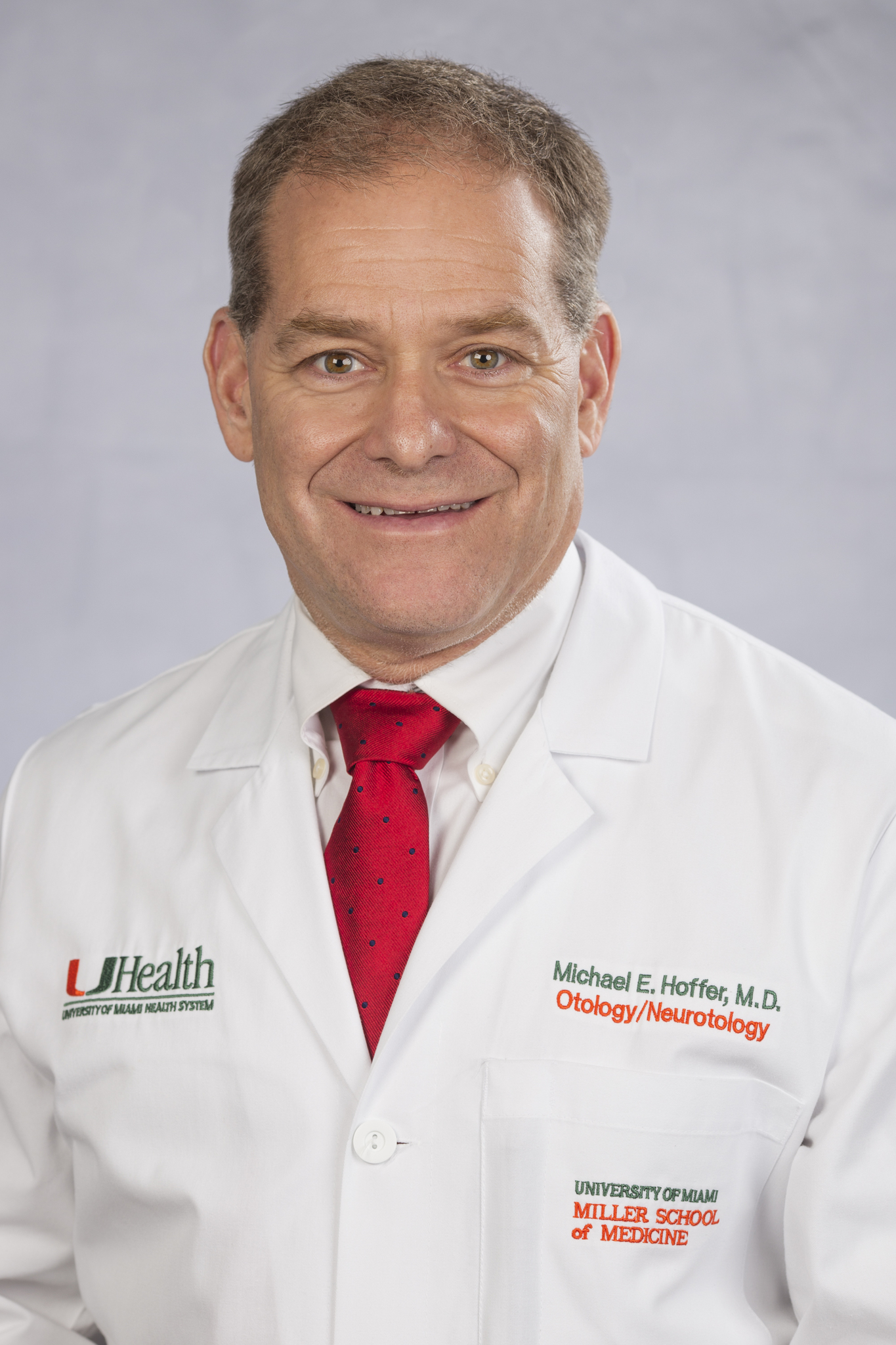A new study has found a distinctive neurological pattern among U.S. Embassy staffers and family members who were injured three years ago while stationed in Havana, Cuba. By analyzing videos taken during initial clinical evaluations, researchers from the University of Miami Miller School of Medicine and the University of Pittsburgh School of Medicine found staffers with neurological impairments had similar changes in eye movements and pupil responses.
“The patterns of response in these individuals are markedly different than those seen in a group of individuals with mild traumatic brain injuries and from a control group with no injury,” said Michael E. Hoffer, M.D., professor of otolaryngology and neurological surgery. “Their distinctive presentation may help guide treatment decisions for individuals who report a similar cluster of auditory and neurological symptoms.”
Dr. Hoffer was a co-author of the study, “Distinctive Convergence Eye Movements in an Acquired Neurosensory Dysfunction,” published recently in the journal Frontiers in Neurology – Neuro-Ophthalmology. Carey D. Balaban, Ph.D., professor of otolaryngology at the University of Pittsburgh School of Medicine, was the lead author. Bonnie E. Levin, Ph.D., professor of neurology and director of the Division of Neuropsychology at the Miller School; Mikhaylo Szczupak, M.D., a Miller School resident; and Alex Kiderman, Ph.D., vice president of Neurolign USA, LLC in Pittsburgh, were co-authors.
In late 2016, more than two dozen U.S. diplomats and family members in Havana began to report sudden onset dizziness, ear pain, and tinnitus. Most of the affected individuals reported hearing an unexplained noise before the symptoms began. Others reported a sensation of pressure passing through their head and abdomen. In February 2017, Dr. Hoffer, a former military officer with security clearance, was contacted by the U.S. State Department, and 25 individuals from the U.S. Embassy were evaluated at the Miller School and given appropriate therapy. Medical findings of those initial acute symptoms were first reported in Laryngoscope Investigative Otolaryngology in December of 2018.
“Our most recent retrospective study documents a true neurological impairment following this unknown exposure,” said Dr. Levin. “Despite claims that this condition was imaginary or a psychological response to stress, our findings show the neurological impairments were very real.”
During the initial evaluations, the researchers used head-mounted goggles developed by Neurolign USA to record the patients’ eye movements and pupil responses. “Eye movements can help diagnose many diseases and conditions,” said Dr. Kiderman, who helped develop the Food and Drug Administration-approved screening and diagnostic technology. “This system can detect eye movements of just 0.1 degrees, as well as changes to the pupil size, without relying on subjective estimates.” (None of the other co-authors have a financial interest in the company.)
Under Dr. Balaban’s direction, the collaborative research team examined patterns of convergence, when the eyes focus separately on an approaching object, and divergence, when an object moves away, as well as changes in pupil size – constricting with convergence and dilating with divergence.
“The patterns of response in 19 individuals from the Embassy were markedly different than those seen in a group of 17 subjects with mild traumatic brain injuries, and from 62 control subjects with no injury,” said Dr. Balaban. “The results from these tests indicated a clear difference between the Havana Embassy subjects and those with concussions or other mild traumatic brain injuries.”
Since 2017, dozens of individuals, both inside and outside the diplomatic community, have come forward with similar reported symptoms, said Dr. Balaban, who has collaborated with Dr. Hoffer for more than 25 years. “In the vast majority of these ‘worried well’ cases, individuals do not have a history and symptoms consistent with Havana diplomatic community subjects,” said Dr. Hoffer.
Having standardized diagnostic criteria can address these individuals’ concerns, added Dr. Hoffer. “We now have an objective neurological screening platform that could be used in an overseas clinic or deployed to the field should a similar incident occur in the future,” he said. “An accurate evaluation of an individual’s symptoms provides the foundation for an effective treatment response.”
Original post https://alertarticles.info
